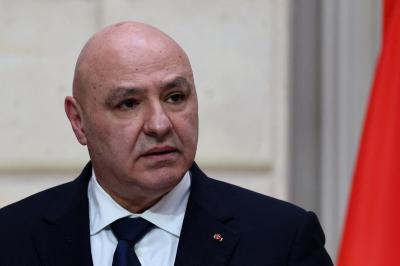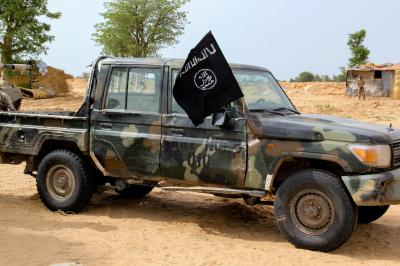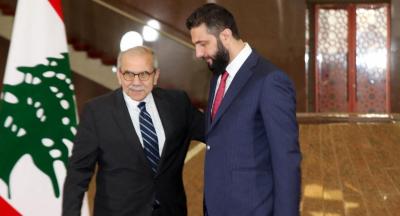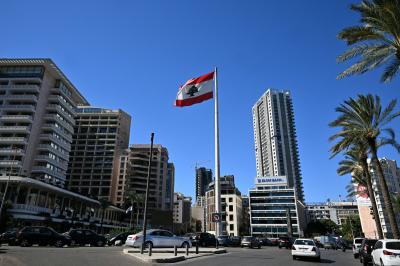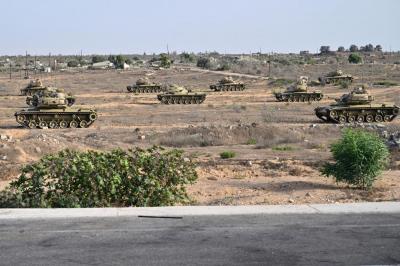In the recent cabinet session, the Lebanese Forces ministers called on the government to clarify its commitment to the ministerial statement regarding the strict implementation of Resolution 1701 and the disarmament of Hezbollah. They requested a six-month timetable for this purpose. The Prime Minister took note of the request and considered it positive, while the President of the Republic responded by saying, "Everything has its time."
It is unfortunate to note that Iran and Hezbollah have not changed their position or strategy in the region and in Lebanon, with Iran seeking regional hegemony through the export of its revolution and Hezbollah dominating the domestic Lebanese scene. It seems difficult, at present, to predict how the situation in the region will develop.
This circumstantial stalemate constitutes a bottleneck that makes it impossible to find convergent solutions where strategies and objectives diverge. Often, one of the major players uses surprise to break the deadlock. The impending political deadlock may reach even higher levels, as the new presidential term enjoys local, regional, and international support that will not allow Iran or other detractors to obstruct its progress. Each sectarian and political component in Lebanon suffers from a lack of creativity, each for its own reasons: the Shiites because of the consequences of the war; the Sunnis because of the lack of a clear authority; the Druze because of the internal crisis and their division between Israel, Syria, and Lebanon; and the Christians because of uncertainty regarding their political options (re-establishing central authority, federalism, or simple separation?). Meanwhile, Lebanon is not a priority, despite French and American rhetoric about hope for a better Lebanon. The world is in turmoil and faces renewed fighting between the Houthis and the United States, while Iranian and Israeli actions are turning UN Security Council Resolution 1701 into an open wound rather than a hoped-for solution. The essence of the resolution, which calls for a Lebanon free of any non-state armed group, has not been fully respected. The Lebanese Armed Forces do not need more time or more troops to deploy. It requires genuine government resolve to confront Hezbollah. This is a decision the government is hesitant to make for fear of slipping into an internal war if the Shiite community unites behind those who have stripped it of its representation.
Rising Tensions and the Possibility of Escalation
The rocket attacks from Lebanese territory on March 21, 2025, confirm the above statement, creating a highly volatile situation with a high potential for escalation.
The immediate consequences of this are heightened tensions between Israel and Lebanon. Israel's reported responses include significant strikes on Lebanese territory. This increases the risk of a wider conflict. Whenever Hezbollah or Iran needs to create tension, missiles are ready to be launched. The high likelihood of Hezbollah's involvement, even if it denies it, raises fears of a wider confrontation. In short, while the country already faces significant economic and political challenges, and the Lebanese government's ability to maintain control and implement Resolution 1701 is under intense pressure from the international community, its diplomatic efforts and calls for restraint and compliance with UN resolutions cannot continue indefinitely. Unfortunately, in the ongoing US-Iran war, each of the pro-Iranian factions still believes it can win or change the course of events in its favor. This belief makes a resumption of the war possible and increases the temptation to launch a qualitative strike, similar to the October 7, 2023 attack, this time with a larger international scope, with international solutions that go beyond the consequences of the recent world wars in the Middle East.
Only swift and forceful action by the Lebanese state can overcome this problem. The crucial question here is: Are the current government and its armed forces, along with their new leaders, capable of doing so?
The Lebanese Armed Forces' Ability to Continue Its Missions
The ability of the Lebanese Armed Forces (LAF) to fully implement the ceasefire agreement and UN Security Council Resolution 1701 is a complex issue, based on several factors, while addressing the challenges to the LAF's authority.
A fundamental aspect of Resolution 1701 and the ceasefire agreement is the disarmament of all armed groups in Lebanon, with the exception of the Lebanese Armed Forces and other security services. However, the presence and military capabilities of Hezbollah pose a significant challenge to the LAF's ability to exercise its authority unilaterally until the Lebanese government takes a clear political position regarding it.
The LAF's ability to carry out many missions is affected by several factors, such as limited resources and dependence on international support, particularly financial and military support. Furthermore, political stability in Lebanon profoundly impacts the Arab Liberation Front, which continually requires the cooperation of all relevant Lebanese parties to operate effectively. Despite the significant efforts made by the United Nations Interim Force in Lebanon (UNIFIL) to deploy in southern Lebanon and maintain stability, the full implementation of Resolution 1701 remains an ongoing challenge. In short, the rocket attacks have created an extremely dangerous situation. The future depends on the reaction of the parties involved, the level of international intervention, the ability of the new government in Syria to consolidate its control, and clear directives from the Lebanese government. Otherwise, the risk of a new conflict remains extremely high.
Recently, a new phenomenon has emerged on the regional scene: the Palestinian (spontaneous anti-Hamas?) demonstrations in Gaza, demanding an end to the fighting and the departure of Hamas from Gaza. Just yesterday, we learned that Hamas had just expressed its intention to organize counter-demonstrations in favor of Al-Aqsa Mosque, Palestine, and so on.
Conflicts within Society
This phenomenon suggests the beginning of an internal Palestinian conflict, the outcome of which is still uncertain, but it undoubtedly raises questions about Hamas's representation as the sole interlocutor for the Gazans and suggests an internal Palestinian solution to the conflict with Israel.
Some may be inclined to generalize this (positive) phenomenon to Lebanon, within the Shiite community. We know from experience that the Lebanese state's intention to flex its muscles against Hezbollah to regain its monopoly over the use of force could lead to Shiites rallying around this party and triggering an internal war similar to what happened in February 1984... something the state seems to have avoided so far.
We, in this East, which is hyper-sectarian in terms of identity, also know that the only cure for the ills of the sectarian components held captive by their representatives will come only from within these components. Therefore, only a Shiite rebellion against Hezbollah and the Amal Movement's control over the Shiite population would offer hope for an end to the Shiite rebellion against the Lebanese state and constitute an opportunity for a successful new beginning for the state...
This Lebanese state, caught today between Charybdis (war with Israel) and Scylla (civil war), like Ulysses (his fig tree branch), would seize the fig tree branch of internal Shiite mutiny to break the sectarian deadlock, regain its authority, monopolize the use of force, and heal the wound of Resolution 1701 by fully implementing it.
 French
French


